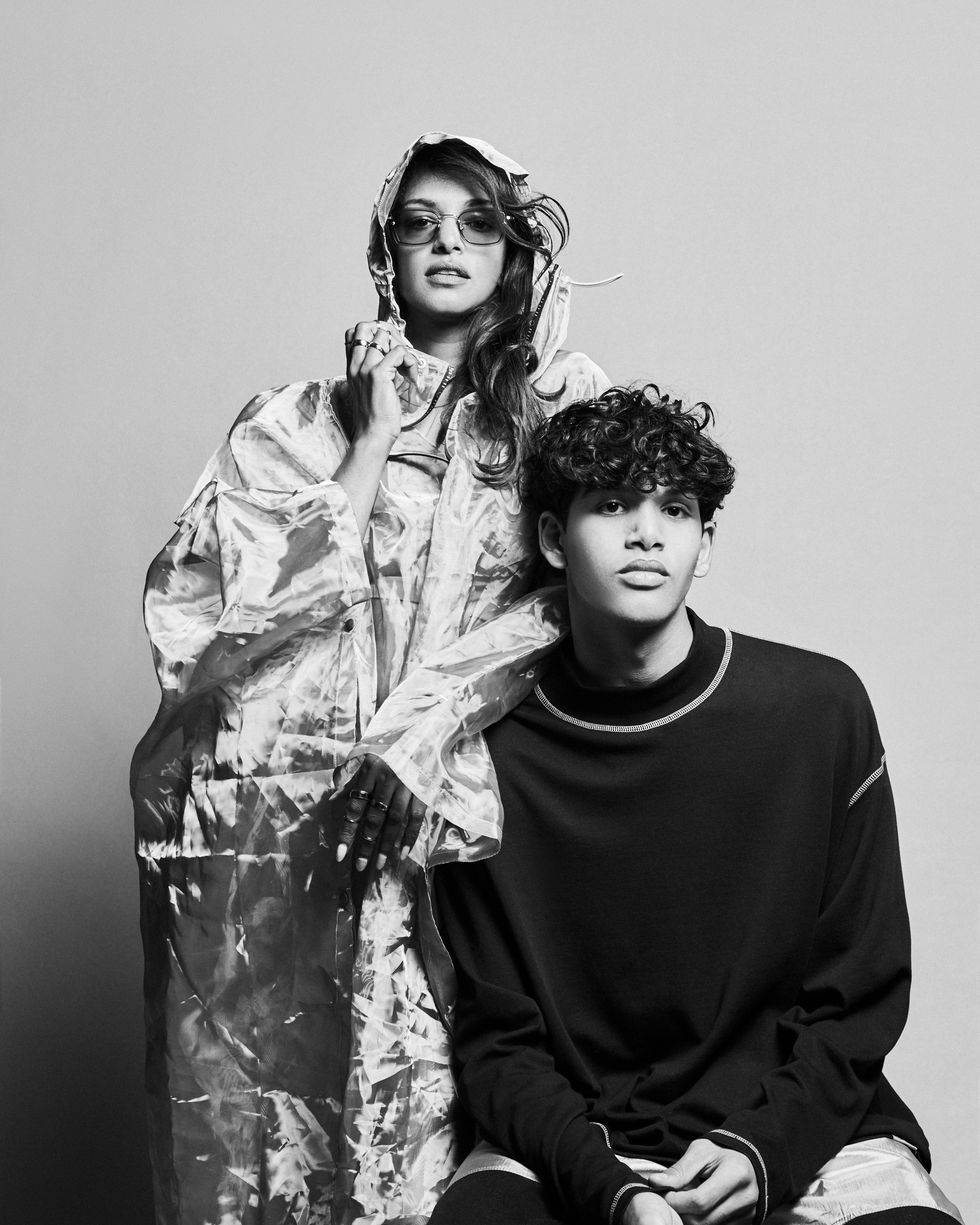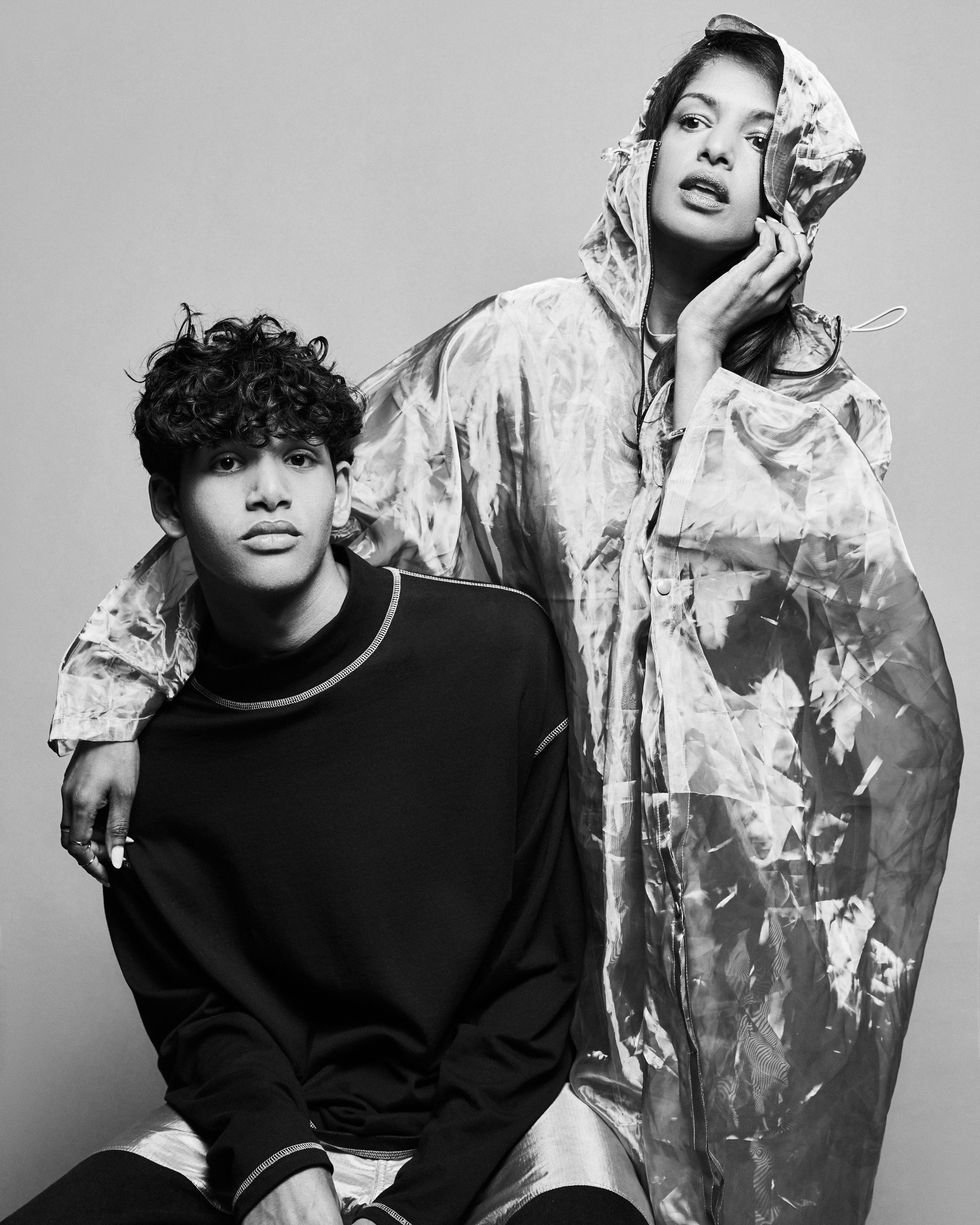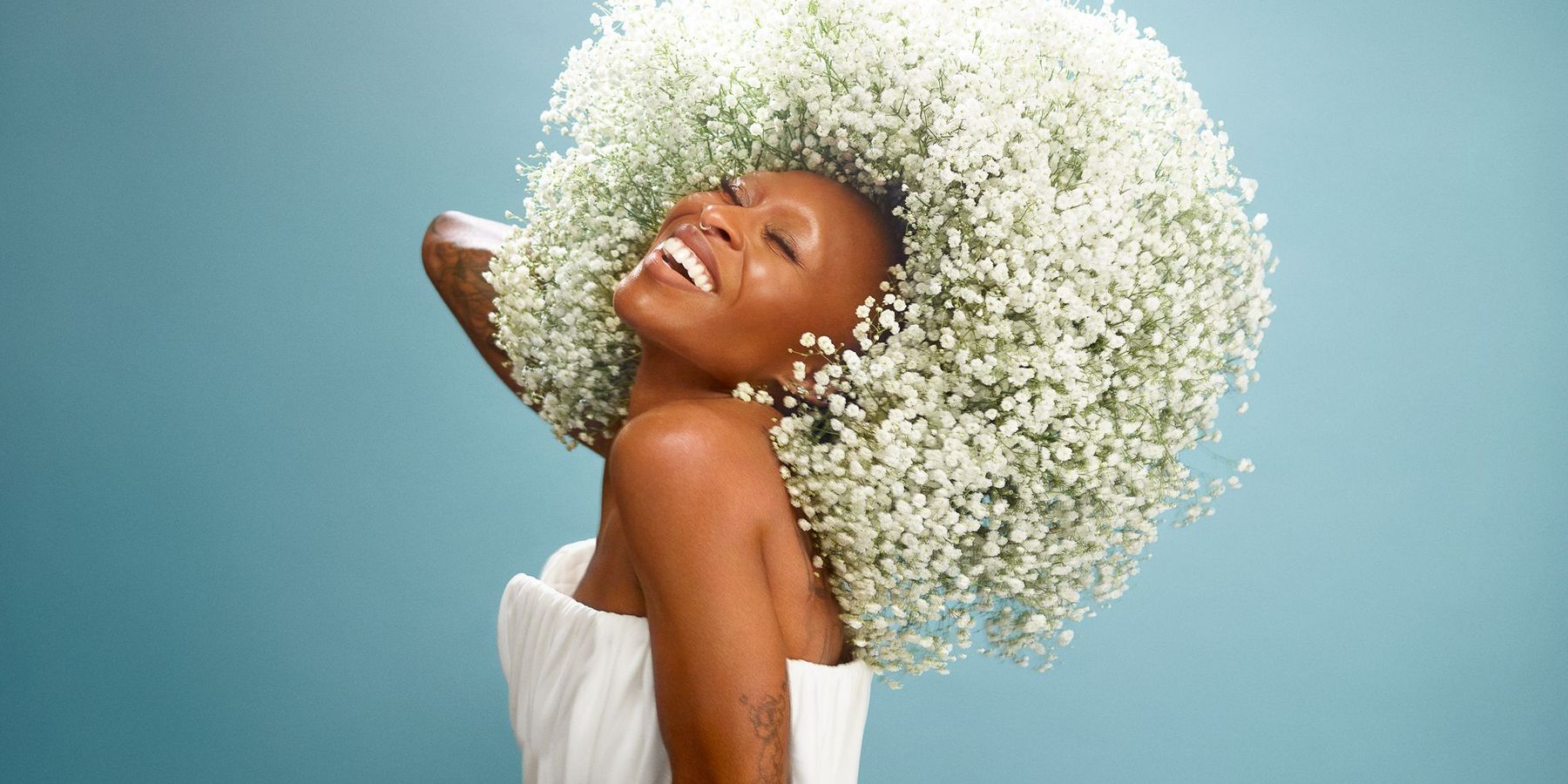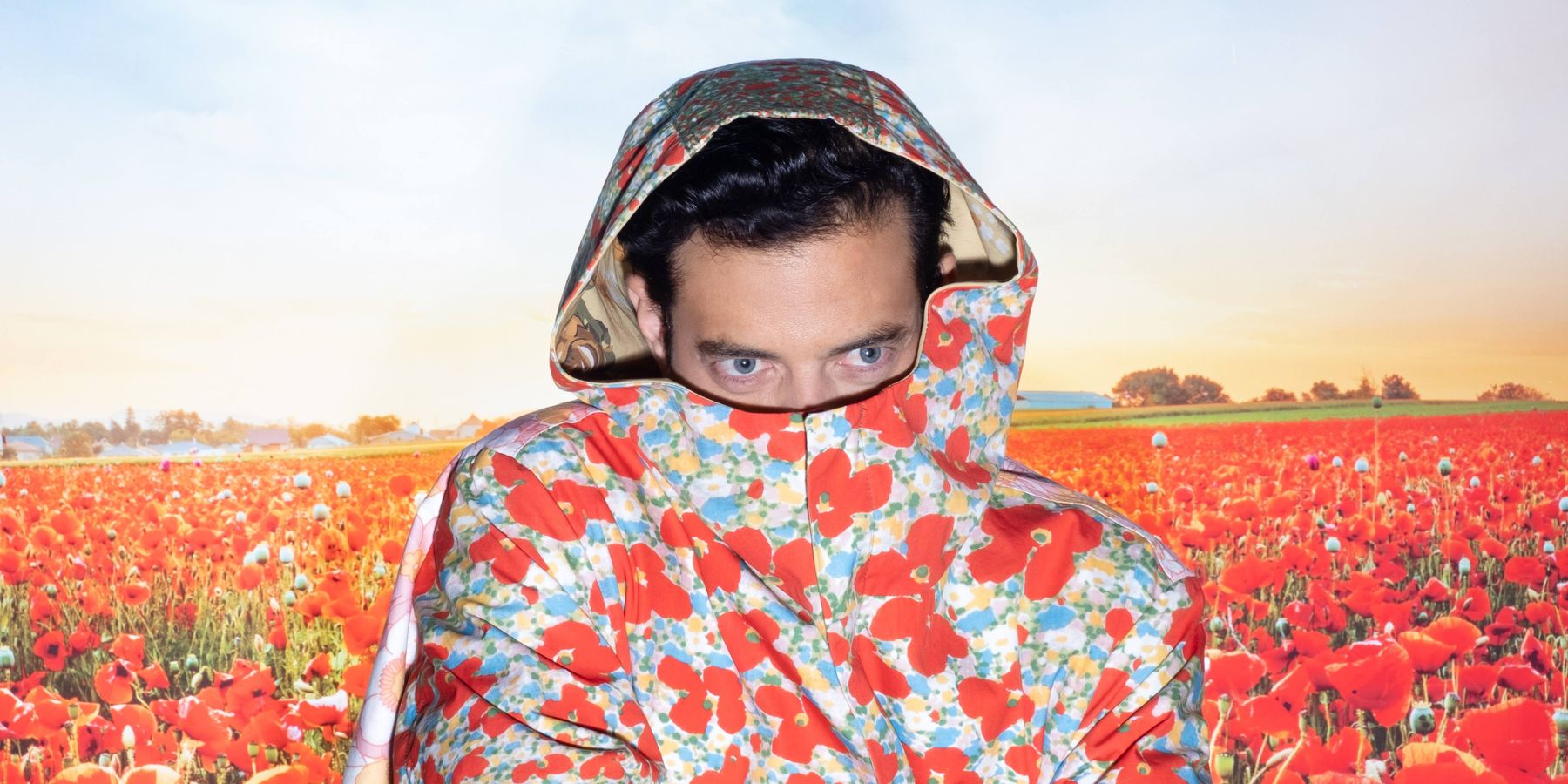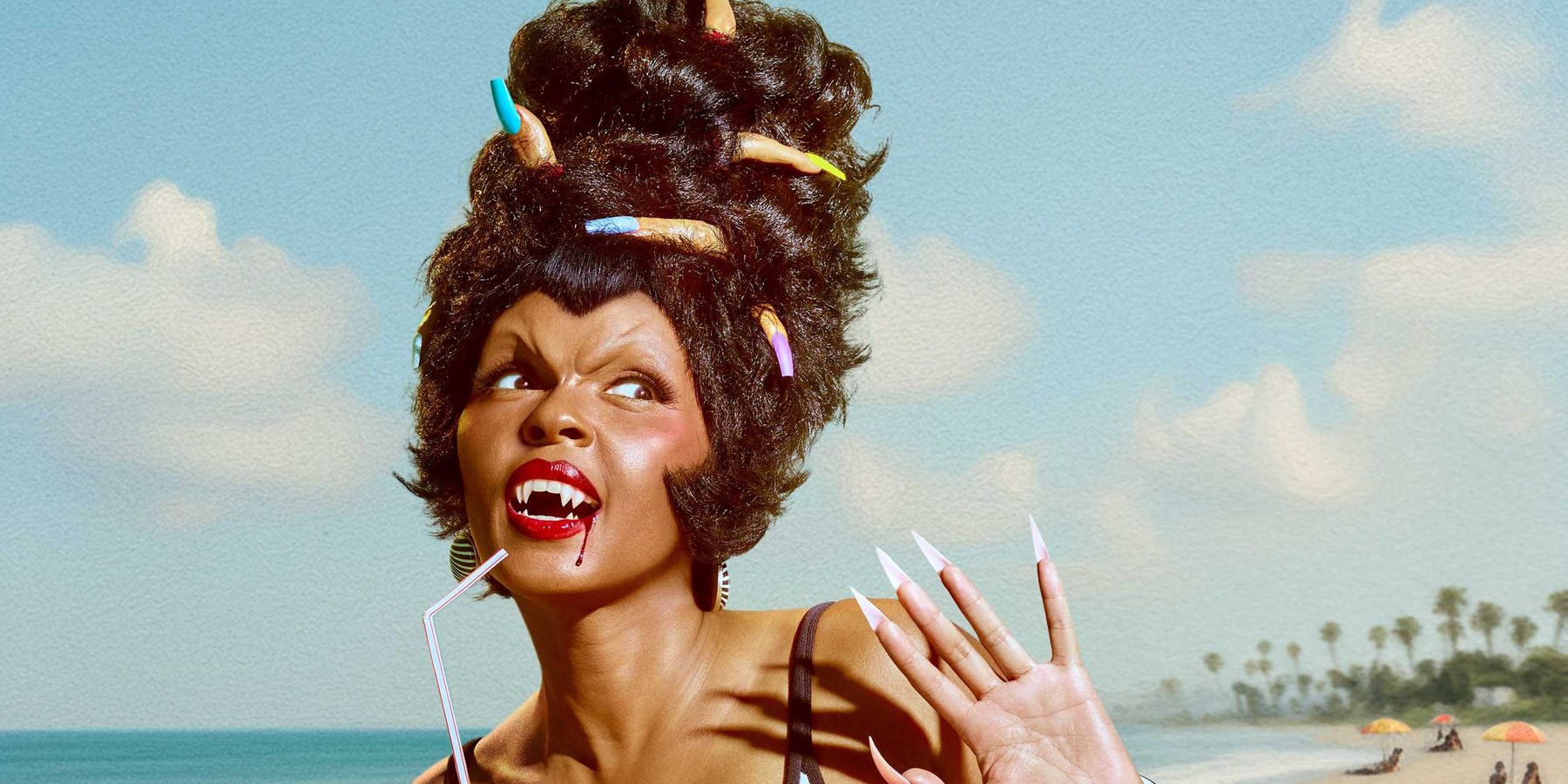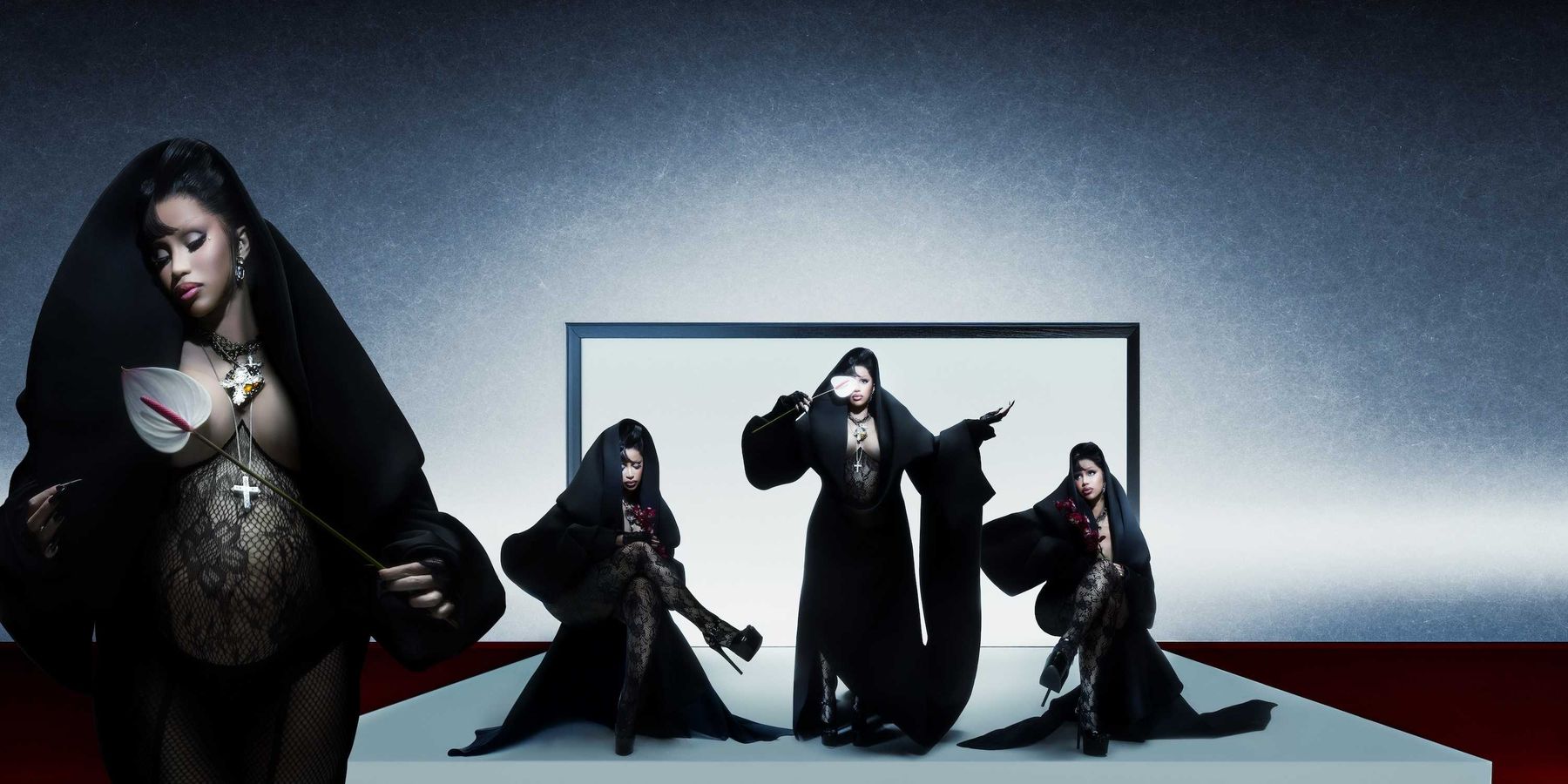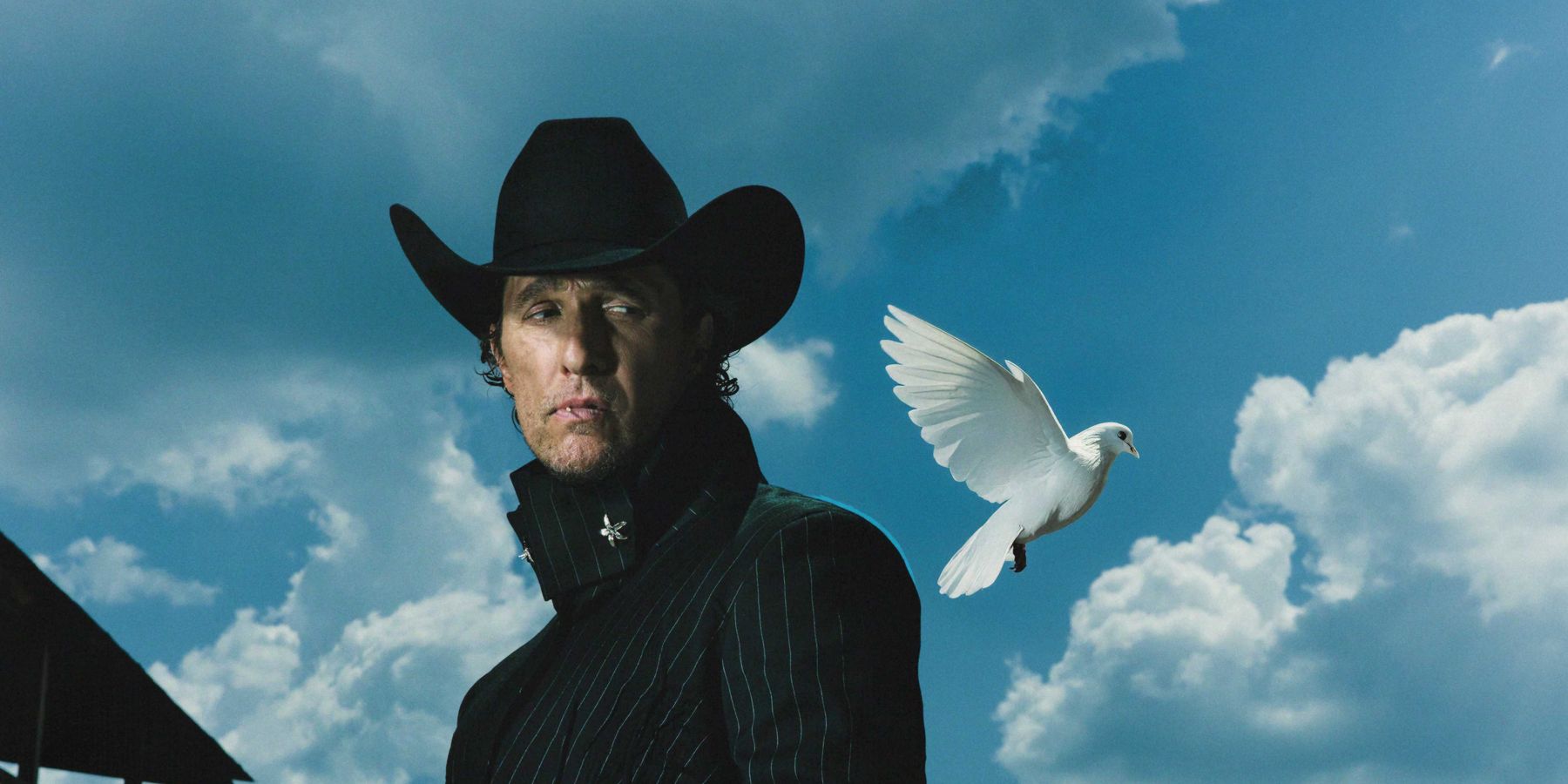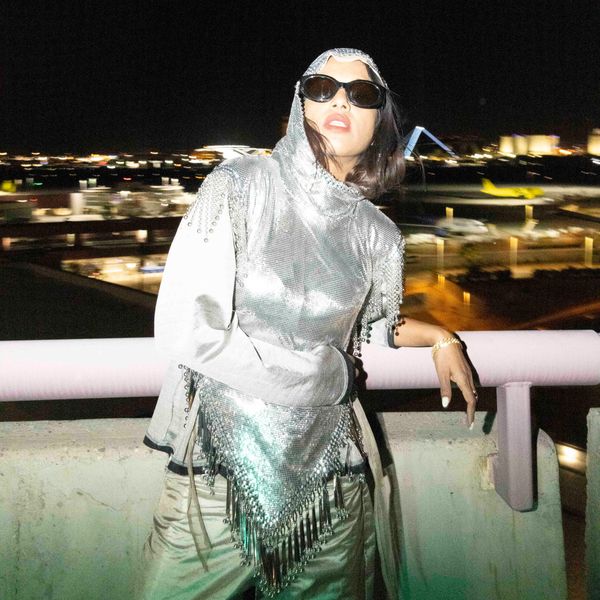
M.I.A. and the New OHMNI Frontier
By Ivan Guzman
Mar 12, 2025Hearing M.I.A. talk always feels like an important moment. Throughout her decades-plus career, the 49-year-old has left a lasting imprint on fans and non-fans alike whenever she speaks. “Talking is a spiritual thing, so doing interviews is part of that for me,” she tells PAPER.
It’s all in her outspokenness and the way she predicts things. Even in the early days of M.I.A., when the internet was in a way more primitive form, she was already ahead of the curve — an artist thinking globally, speaking out on injustice and sounding the alarm about the ways technology would reshape the world. And now, as we find ourselves deep in the reality she warned about, her insights feel even more urgent. “We’re still in that zone,” she says. More than ever, really.
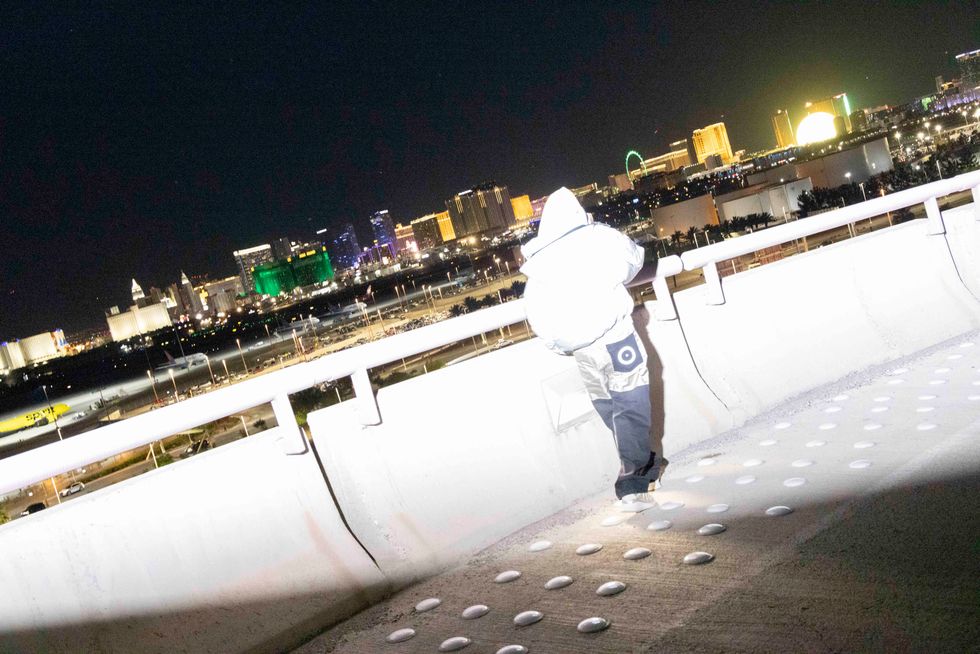
The last time we caught up with M.I.A. was in 2022, around the release of her album MATA, a project that reflected her evolving spirituality and exploration of Christian faith. It marked a shift in her artistry, but didn’t dull her sharpness. If anything, her voice — whether through music, interviews or activism — has only become more layered, weaving together history, politics and personal transformation.
Since then, M.I.A.’s focus has expanded into a new frontier: OHMNI, her self-described “first ever street wear for the modern information era.” It’s more than just clothing — it’s protection. A response to a world where privacy is shrinking, where the lines between physical and digital are increasingly blurred. The brand takes on issues she’s been speaking about for years — corporate surveillance, electromagnetic frequency exposure, the ways our bodies and data are constantly being tracked.
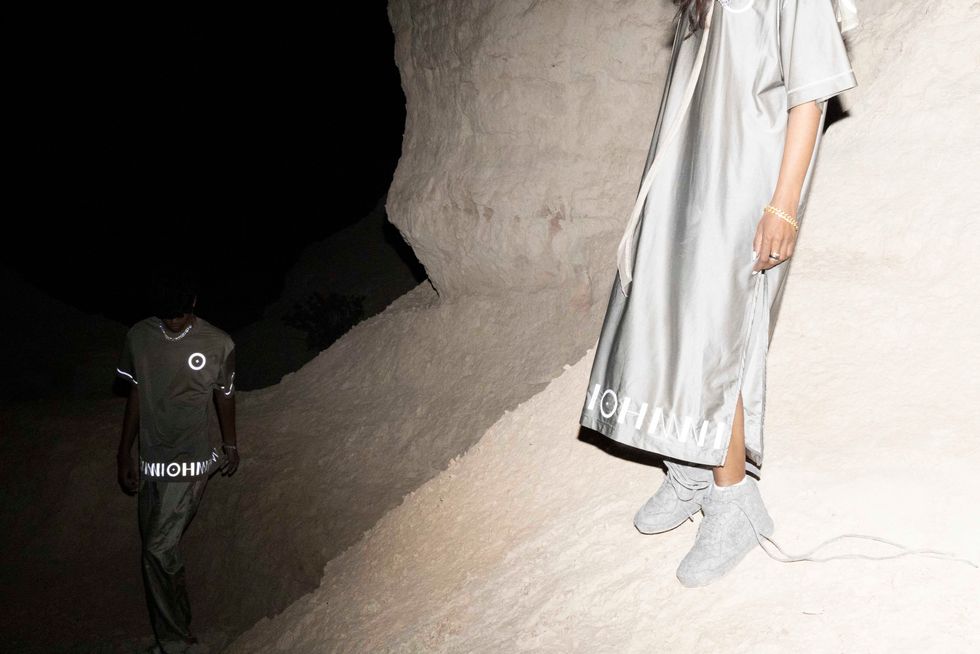
But with OHMNI, M.I.A. isn’t just talking about the problem. She’s offering a solution. The brand exists outside of fast fashion’s exploitative cycle, integrating technology not to track or mine data, but to shield. It’s futuristic in a way that feels like a warning and a lifeline all at once.
Whether she’s making music, making statements or making clothes, one thing always feels certain — M.I.A. sees what’s coming before the rest of us do. PAPER sat down with the artist to talk about the philosophy behind OHMNI, her ever-changing relationship with technology, and the lessons she’s learning from her 16-year-old son.
OHMNI is available for purchase at ohmni.com.
It's such an honor to speak with you. I’ve been a fan for a long time, and I grew up watching your interviews, absorbing your whole universe.
That’s sweet, yeah.
You’ve always been revered for your art and your words, but at the same time, you’ve been heavily scrutinized. What’s your relationship with being interviewed? Has it changed over time?
Yeah, that’s an interesting question. Sometimes I sit there and think, should I be mad at all of it? Should I just stop doing interviews? But then, communication is important, whether people like you or don’t. You can say things, but you can’t control how they’re understood. You’re not meant to connect with everyone on a spiritual level, but you still have a duty to talk. Talking is a spiritual thing, so doing interviews is part of that for me. Even if one person doesn’t get it, someone else might.
I was watching an old interview with Q from the Maya era, where you were asked why you still do press, and you said, “Because I feel like kids need it now more than ever.” That was probably 2010. You also said, “I’m bad at selling things,” which is interesting now that you have OHMNI, your fashion brand. Do you still feel that way?
That’s funny, because that interview was about tech and how it was going to overtake everything, which is kind of what OHMNI is about too. Back then, I was saying that tech companies were going to measure success through graphs and pie charts instead of looking at people as humans. OHMNI still tries to counter that — it gives you privacy and space and lets you decide when you want corporations and tech companies to access your data.
Since then, our reliance on tech has gone through the roof. It’s something you can’t avoid. I moved into a place in LA, and it has smart meters, temperature trackers and an iPad on the wall. For a long time, I resisted living somewhere like that, but after the fires, new houses are being built with all this tech. It’s being sold as “the future.”
We’re still in that zone. The clothing is still providing the same function as what my interview was on that talk show, which is to say, “Hey, here’s the information, here’s the data, here’s what’s gonna happen, and this is where we are.” But right now, I’ve made this product out of necessity because my son is 16. He’s growing up in this world and I don’t know how else to really educate him on it. He’s really into fashion and technology. So it’s like, if no one’s gonna do this, I’m gonna do it myself. So in terms of selling that, I try to place OHMNI in the functionality space. It still functions in the science and health area. It’s interesting. We’ve been around for eight months, and we’re figuring that out. It’s like, how much do you push this? Or do you just let it be something that’s counter culture and exists in fashion, and people come to it if they want?
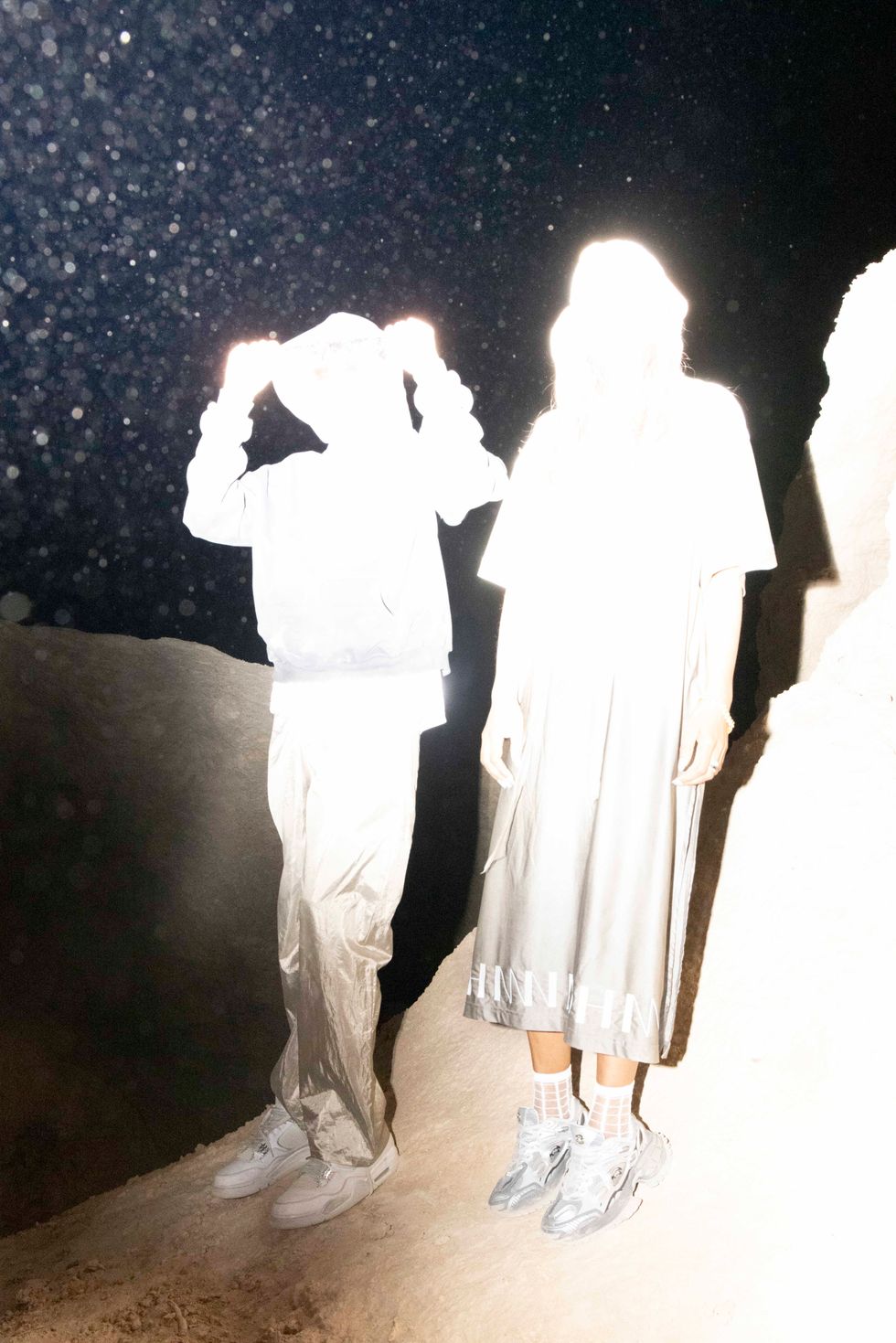
How do you approach marketing? OHMNI is such a unique concept that it makes headlines on its own. So do you do traditional campaigns, TikToks, that sort of thing?
At the moment, we’ve done nothing in terms of marketing. We’re just dipping our toes into it and figuring out the next steps. It’s interesting because it’s definitely something people want. Now, when I walk down the street, people don’t say, “Hey, are you M.I.A.?” They say, “Oh, are you wearing OHMNI?” And I’m like, how do they even know about this?
I think it’s because people are becoming more health-conscious, especially in LA. The other day, this woman stopped me on the street and said, “I love what you’re doing with the clothing.” And then, as she walked away, she added, “Oh, by the way, I still listen to your music too.” It was like an afterthought, which I found really interesting.
It made me think about how people used to listen to my music in 2010 — it was all about energy, getting pumped up, motivating you to go to the gym or get things done. People still tell me that all the time. But now, with OHMNI, it’s tapping into a different side of things — wellness, staying fit, taking care of your mind and body.
It feels like you can find plenty of music now that hypes you up, but fashion that gives you protection or a sense of control? That’s not as common. Maybe that’s why people find OHMNI so unique.
Has living in LA changed your relationship with health and wellness?
Well, I made OHMNI when I was outside of LA. It was during the time last year when I didn’t have a Visa to come to the US. I didn’t want to sit around crying about it, so I was like, I really miss my son and I haven’t seen him. I was meeting him in Mexico all the time. While I was waiting for the Visa, I decided to invent this brand. I didn’t really know who was gonna be interested in it. I thought that people in London would probably relate to it the most because we’re the most highl -surveilled, tech-y, smart-citied place. LA’s not so much like that, but it’s interesting. I’m just finding out that it’s actually doing well in New York. It’s dense, urban, tech-y areas who know about it.
In LA, I think people are quieter, but they’re really into it as well. But they’re into it for a different reason than, say, London and New York. I think people here [in LA] really deeply know about EMF stuff, so they’re doing it for a general reason. There’s just more nature here and places are spaced out. I don’t feel LA is as intense as being in London. But people know about it here, whereas I feel less people know about it in London.
The OHMNI brand has got lots of elements to it. One is the surveillance aspect, the next one is EMF, the next one is cell phone stuff. A lot of people have reached out. This one person actually had a tumor in the shape of a cell phone because they put it in their handbag and held it against their rib cage all the time. She had to have a tumor removed, and when they did an x-ray it was in the shape of a cell phone.
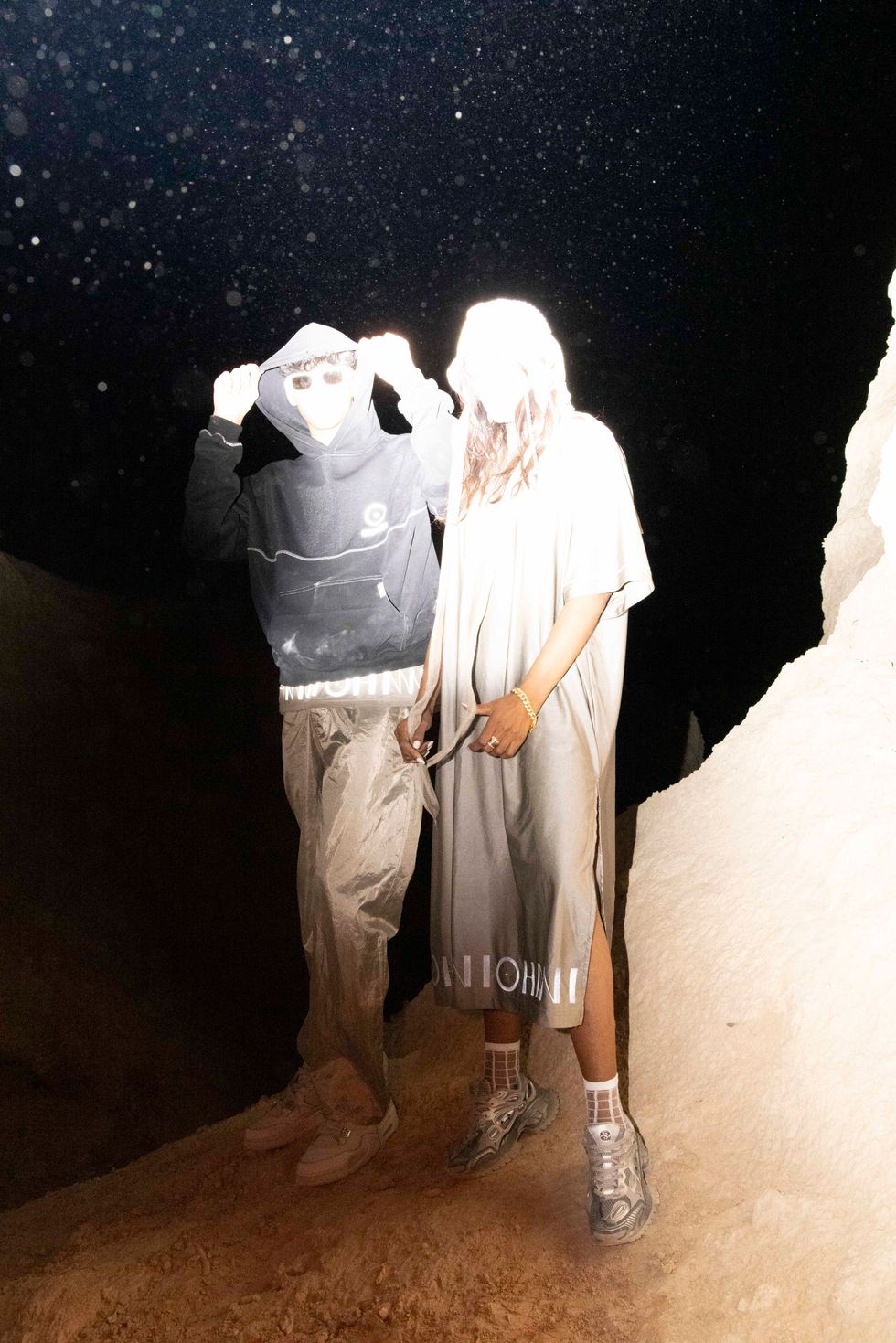
Wow.
Yeah. So she wanted to help market the bags and be a part of that. She reached out to us saying, “Oh my God, I really need one of these things.” People in LA are more like that. They’re more into self-preservation. People in New York and London are more about the surveillance thing.
You’ve definitely been consistent throughout your whole career. Going back to that old interview, you were talking about these things in 2010/2011, and now it’s sort of manifested itself through the OHMNI brand.
Yeah.
I’ve been giving my data away since I was literally, like, nine years old. So who is your target customer right now and who would you want to be the target customer for OHMNI?
I think it’s generational. At the moment, I haven’t really defined that. Parents get into it for a different reason because they know more about it. And then they’ll buy it for their teenage kids, like me. I want my kid to wear it. He wears the boxers. It’s sort of generational, because initially, who would know this information are grown ups. But the people who need it are younger people. I’ve had to go in that direction. That’s what I thought. Initially, doctors and nurses were the people buying the brand, but then they were buying it for their kids and teenagers.
We live in a time where your teenager takes your credit card and buys shit. Everybody markets to teenagers because they have the highest spending power. I’ve had to flip that back on its head and go back to the parents who own the credit cards and make something for them because they’re the only ones who know this information. It’s kind of nice that parents who are in the medical field were the number one supporter in the first couple weeks of OHMNI launching. It was a very underground thing where they were sending it to other doctors and nurses who are around radiation a lot. That was surprising. I didn’t even think about that.
Now, it’s growing in a different direction. I think it’s sort of like the music. At the moment, everyone is like, ‘Who is your target audience?’ And it’s really hard to say. I’d like to say that we’re in the same target audience as, say, I don’t know. Who could it be?
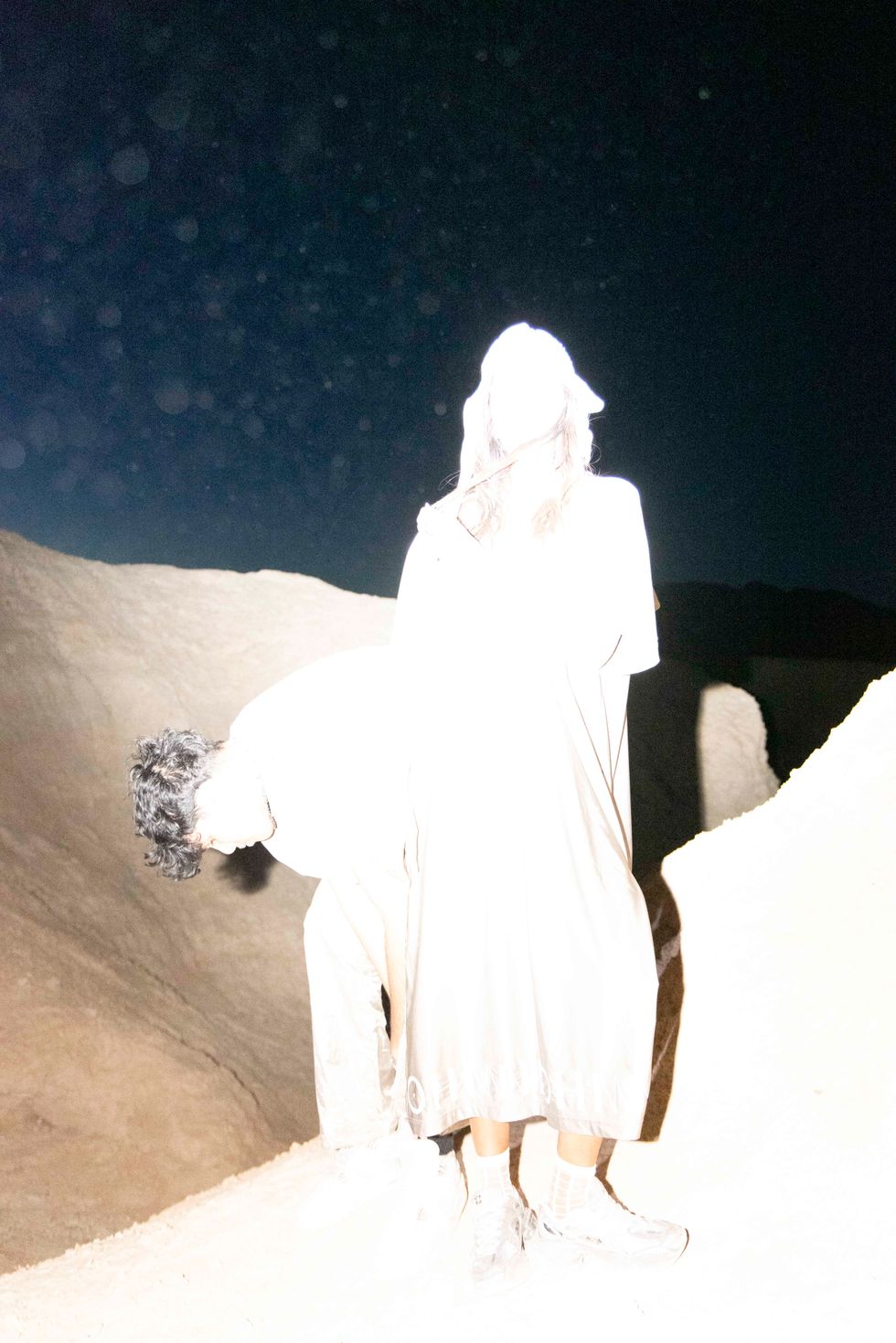
It could be everyone.
It’s very hard to say because I don’t think I’ve even wrapped my head around what this is yet. I made it out of necessity and the fact that I was deeply inspired by a moment when I couldn’t see my kid. And I wanted to come back with something that was useful to him. That’s why the logo has six lines in it because those are the six months that I spent out of the country. That’s how long it took to conceive it. I was like, this is a moment that you’ve been given to really think about what you can do for your kid that could be useful. I wanted to realize that and figure that out. This is the thing that manifested. So I didn’t really think about the wider thing, but when you put it into context within the wider fashion world, it makes sense.
I was in India, and I never wanted to make a normal clothing brand because of the sweatshops and labor issues. Everyone was always telling me, “You need to make a brand.” I came from Central Saint Martins and fashion was always part of the fabric of what I am. There was always this sort of thing where I didn’t wanna just add to the problem. At that time, Temu launched. I saw the unraveling of the fashion industry because they invented these things like Temu and Shein, who were making these things for zero dollars. They were replicating anything and everything. How do you compete with something like that? Imagine if you had a brand like Off-White or Hood By Air. That thing would just get turned around so fast and imitated. You can no longer compete with that machine.
Fast fashion has taken over so many brands, it’s crazy.
Yeah. So I started thinking, How do you beat that cycle of fast, hyper-competitive fashion? And that was the birth of OHMNI. It happened at a time when there was this intense battle going on — these massive legal fights between fashion brands and companies like Shein and Temu. It was just a frenzy. And I thought, This is insane. I don’t know where that industry is going, but I wanted to create a brand that was outside of that madness, something based on a completely different set of values.
We’re not going to change the tech presence in our lives, it’s only going to become more embedded. So what do we do? That’s what fashion has to be for me, right now. I need to understand this new world that’s being built for us, where we fit into it and how we navigate it every day.
I initially had this strong urge to create a brand that was purely organic — something rooted in yogic philosophy, using only organic cotton, real silk, real hemp, and linen. I wanted every fabric to be something that put you in a meditative state, with high-frequency textiles. I tried to do that for years, but it was nearly impossible. You have to go to very specialist villages to get the real, authentic materials. And when you get to that level, the next step is making sure the community benefits directly from the work. That’s a massive task. The production rate is much slower, and the clothing becomes a lot more expensive. Plus, no matter how carefully you try, certain aspects of the supply chain become unavoidable.
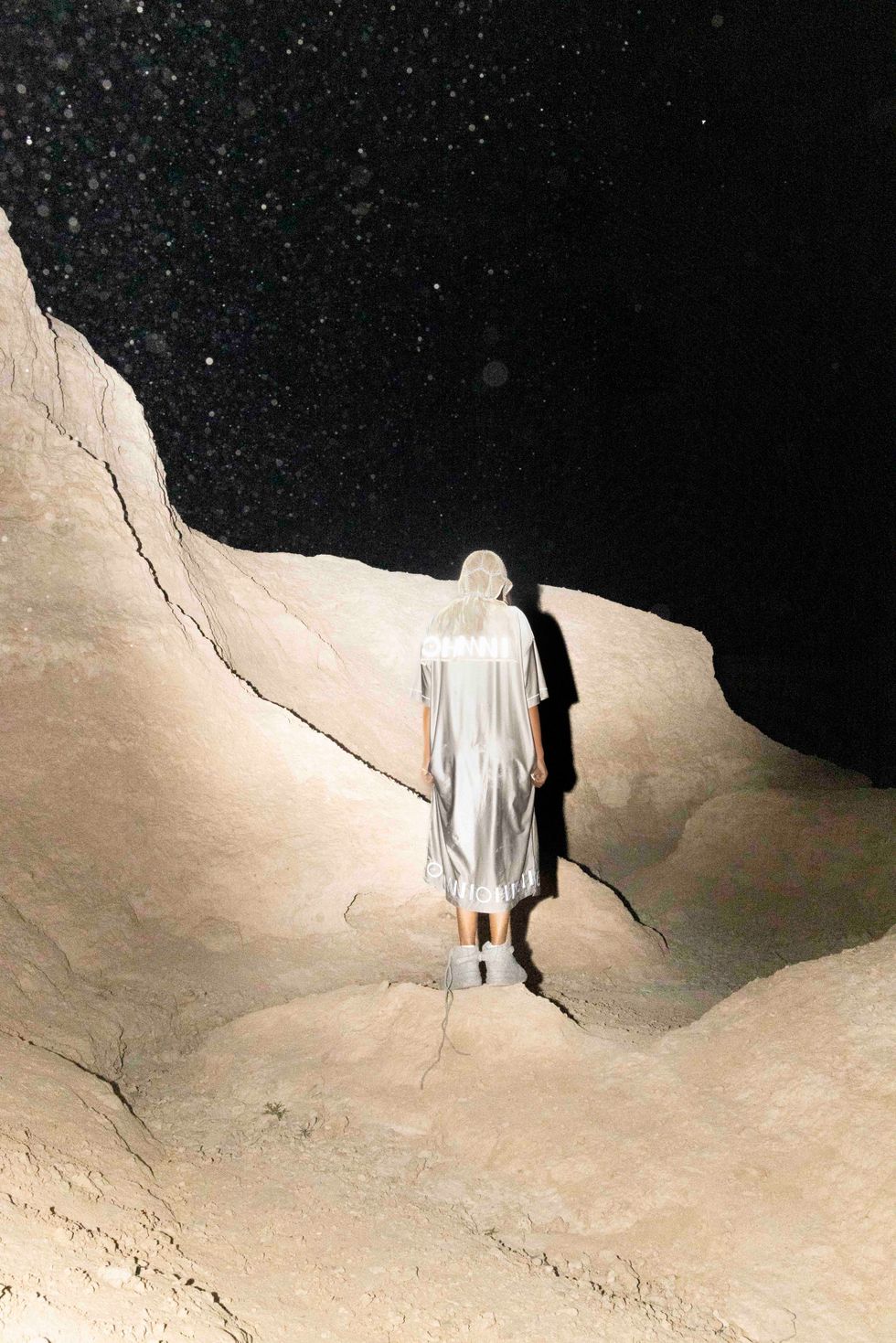
You’ve always been a world artist, in a way.
My brain is always in the future, thinking, Where are we going? In the end, I realized, as much as I love the idea of wearing linen and hemp and meditating on a mountain every day, that’s not my reality. At the end of the day, I have to survive in a city. I drive an electric car, take my kid to school, use my palm to pay for groceries. This is the world that’s being built around me. I can’t avoid it — not yet, at least. Maybe when my son is older, I’ll go sit on a mountain somewhere. But for now, I need to create something that bridges these two worlds.
That’s what OHMNI is about: finding that balance. We’re using the best possible fabrics while also integrating technology in a way that protects you. We’ve refined the material choices to minimize synthetic fabrics like nylon and polyester as much as possible. In some cases, like with mesh fabrics, we need to use a small percentage of nylon to bind the silver. But we’ve gone for the absolute lowest possible amount. Most of the focus is on the metals that actually benefit you.
Hopefully, as the technology develops, we’ll be able to merge silver directly with natural fibers like hemp and linen without needing any synthetic binding. We’re already making progress—one of our fabrics is 100% cotton and 100% silver, with no synthetic fibers at all. That’s a massive breakthrough for us. For the next collection, we’re going to expand on that and use more of these natural-tech hybrid materials.
Some people ask, “Why do you still use certain fabrics?” But I’m already on it. I have the same concerns. The reality is, right now, the technology to produce these fabrics is still evolving. But as that evolves, we’ll evolve with it. The goal is to eventually eliminate synthetic fabrics altogether. When that happens, OHMNI will be exactly where I want it to be—the perfect balance of function, technology, and sustainability.
It’s that M.I.A. thang.
The brand is very clearly inspired by your relationship with your son. I’m wondering, what lessons do you learn from your son every day? What has he taught you, and how do those lessons impact OHMNI?
This brand is really revolutionary. I don't think my son fully understands it yet, but his friends really get it. He’s very fashion-conscious, he loves all brands. He’s a huge supporter of streetwear brands, which is kind of cute. But the funny thing is, on January 1st, he told me his word for 2025 was going to be “nonchalant,” okay? He’s displaying a lot of nonchalance right now, and I’m very chalant. So we always have fights, and I think that’s the inspiration because I’m just like, how could you not be more chalant to that situation? And he’s very relaxed about it.
It’s funny. He starts from one place, I start from another, and eventually, those ideas meet somewhere in the middle. A lot of the time, culture brings him around to something I was already talking about, just through different channels — his friends, social media, whatever. And then he absorbs it in his own way.
Sometimes, he’s like, “I’m not listening to her because that’s my mom,” and you just don’t listen to moms, you know? But then his friends will be like, “Oh yeah, that shit is fire,” and then he’ll be like, “Oh okay, yeah.” Obviously he’s trying to forge his own identity. Sometimes he struggles with how ahead of things I am and that society takes a bit of time to catch up. He also has that.
He inspires me in ways I can’t always describe. That’s something I’ve learned through OHMNI. I don’t always know how or when, but it happens. Like, last night, he threw a party and everyone was saying, “You need to do this every week.” And I’m sitting there thinking, “Where did that come from?” Suddenly, he’s this person who’s good at throwing parties.
16-year-olds.
Yeah, and I wasn’t even prepared for it. But it’s that M.I.A. thang.
Photography: Noah Dillon
From Your Site Articles
Related Articles Around the Web
MORE ON PAPER
Entertainment
Cynthia Erivo in Full Bloom
Photography by David LaChapelle / Story by Joan Summers / Styling by Jason Bolden / Makeup by Joanna Simkim / Nails by Shea Osei
Photography by David LaChapelle / Story by Joan Summers / Styling by Jason Bolden / Makeup by Joanna Simkim / Nails by Shea Osei
01 December
Entertainment
Rami Malek Is Certifiably Unserious
Story by Joan Summers / Photography by Adam Powell
Story by Joan Summers / Photography by Adam Powell
14 November
Music
Janelle Monáe, HalloQueen
Story by Ivan Guzman / Photography by Pol Kurucz/ Styling by Alexandra Mandelkorn/ Hair by Nikki Nelms/ Makeup by Sasha Glasser/ Nails by Juan Alvear/ Set design by Krystall Schott
Story by Ivan Guzman / Photography by Pol Kurucz/ Styling by Alexandra Mandelkorn/ Hair by Nikki Nelms/ Makeup by Sasha Glasser/ Nails by Juan Alvear/ Set design by Krystall Schott
27 October
Music
You Don’t Move Cardi B
Story by Erica Campbell / Photography by Jora Frantzis / Styling by Kollin Carter/ Hair by Tokyo Stylez/ Makeup by Erika LaPearl/ Nails by Coca Nguyen/ Set design by Allegra Peyton
Story by Erica Campbell / Photography by Jora Frantzis / Styling by Kollin Carter/ Hair by Tokyo Stylez/ Makeup by Erika LaPearl/ Nails by Coca Nguyen/ Set design by Allegra Peyton
14 October
Entertainment
Matthew McConaughey Found His Rhythm
Story by Joan Summers / Photography by Greg Swales / Styling by Angelina Cantu / Grooming by Kara Yoshimoto Bua
Story by Joan Summers / Photography by Greg Swales / Styling by Angelina Cantu / Grooming by Kara Yoshimoto Bua
30 September
